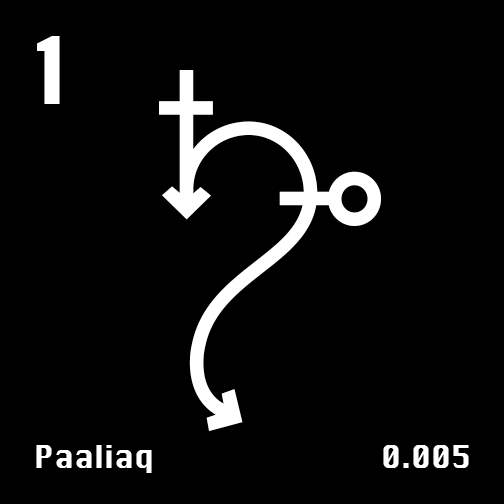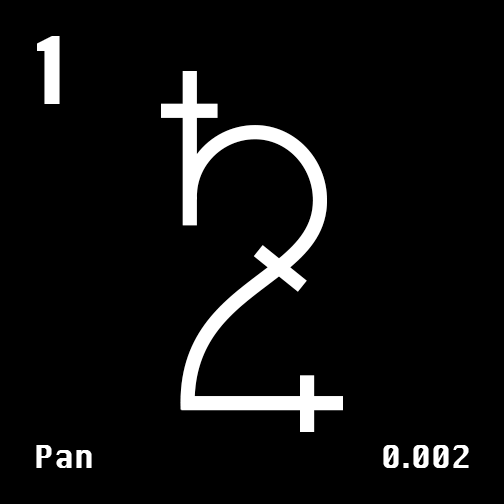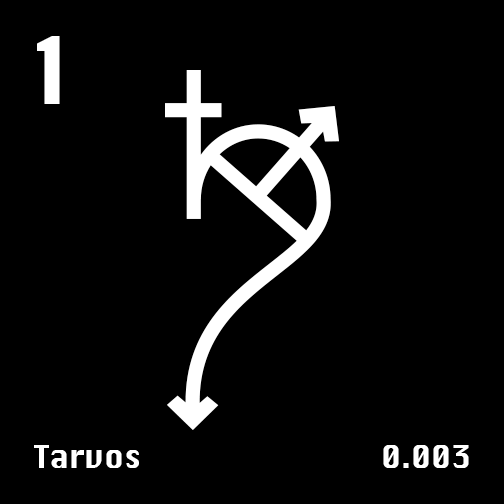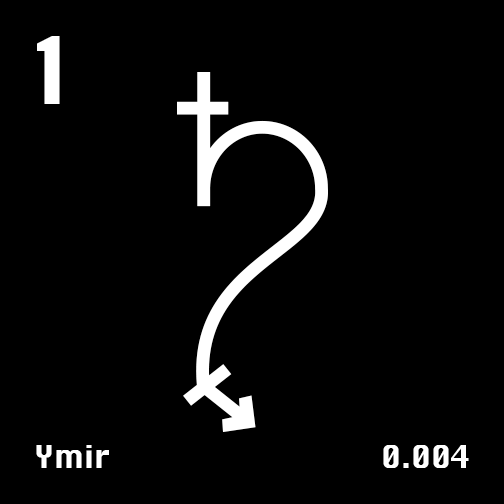The Saturn System
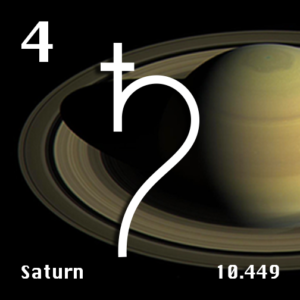
Saturn is the second-largest in the Solar System and the sixth planet from the Sun. It is also, indisputably, the most beautiful planet. Classified as a gas giant, it has an average radius about nine times that of our home, Earth. However, Saturn is only one-eighth the density of Earth. Saturn was named after the Roman god of agriculture since, from a telescope, Saturn appears pale yellow as a cornfield. This yellowish hue is due to ammonia crystals in its upper atmosphere.
Saturn’s magnetosphere isn’t as terrifying or as massive as Jupiter’s. It is about one-twentieth the size of Jupiter’s magnetosphere and significantly weaker than Earth’s magnetic field. Scientists believe Saturn’s planetary magnetic field is created by electrical currents within the metallic hydrogen layer.
Saturn’s interior consists of an iron, nickel, and rock core. This core is believed to be surrounded by a deep layer of metallic hydrogen, an intermediate layer of liquid hydrogen, and liquid helium. These layers are topped off by a gaseous outer layer we see.
Observation and History of Saturn
We have studied Saturn throughout history. Ancient Babylonian astronomers observed and recorded the movements of Saturn. The Romans were ultimately responsible for giving this bright planet its name, “Saturn.”
Saturn derived its name from the god of agriculture in Roman mythology. Cronus, the Greek god counterpart, was the son of Uranus and Gaia and the father of Zeus or Jupiter.
Galileo Galilei became the first to observe Saturn’s rings with his 20 mm telescope following these early observations. Upon observing the planet, Galileo believed that Saturn’s rings were two large moons and referred to Saturn as a triple “star.” Galileo continued to observe the planet throughout its ring phases.
Christiaan Huygens first proposed the idea that what we were looking at were rings around Saturn. Huygens also went on to discover Saturn’s largest moon, Titan.
Exploration and Missions to Saturn
Pioneer 11 conducted the first flyby of Saturn back in 1979. It was able to capture a few images as well as some pictures of a few moons. This flyby also measured the temperature of Titan, Saturn’s largest moon.
Voyager 1 visited Saturn in 1980, sending back very high-resolution images of the Saturnian system. Voyager 2 arrived at Saturn in 1981. This flyby also recognized changes in the rings of the planet as well as the atmosphere.
The Cassini–Huygens probe reached Saturn in early summer 2004. The mission consisted of the Cassini Saturn orbiter and the Huygens Titan lander. Cassini sent back high-def photos of Saturn and its moons, discovering seven new moons, conducting experiments, and completing a detailed flyby to Titan. Radar imaging of Titan’s surface revealed a variety of topographical features including lakes, islands, and mountains.
Cassini also released the Huygens probe into Titan’s atmosphere. Huygens conducted experiments on the surface of Titan and took one memorable photo of the moon’s surface before going offline.
Saturn's Rich Features
Saturn is a gas giant, much like Jupiter. There is no solid surface, but there are suggestions that there may be a rocky core. One unusual feature of Saturn is that it is less dense than water. If you were to combine Jupiter and Saturn, they would make up almost 90% of the total mass of all of the planets in the solar system.
Scientists believe Saturn is more liquid than gaseous due to its density, surrounded by a metal hydrogen layer encased in a layer of molecular hydrogen. The planet’s core is hot, and it gives off nearly two and a half times the amount of energy that it takes in from the Sun. Like Jupiter, scientists believe that there could be rainfall made up of actual diamonds on Saturn.
Saturn’s outer atmosphere is made up almost entirely of hydrogen and helium. Most of it is made up of hydrogen. Some bands resemble those on Jupiter, but they are much lighter and faint. Some of these clouds that make up the bands consist of ammonia ice. Similar to the Great Red Spot of Jupiter, there is a Great White Spot on Saturn. Instead, there have been a series of Great White Spots. They never last too long. There is one every year on Saturn.
The 83 Moons of Saturn
Saturn has more moons than any other planet in our Solar System, with 83 moons. Only 13 have diameters more significant than 50 miles across and 7 are rounded into a planetoid-like shape. 24 of Saturn’s moons are regular satellites.
A regular moon has three distinct features:
- It orbits its planet in the same direction as its rotation.
- It has little to no orbital eccentricity.
- It has no orbital inclination concerning its equatorial plane.
Of these regular moons, seven are large enough to pull themselves into an ellipsoidal shape. Four minor moons exist in a trojan orbit with larger moons. Two mutually co-orbital moons and two moons act as shepherds of Saturn’s F Ring. The remaining regular moons of Saturn orbit near the outer edge of the A Ring, within the G Ring, and between the moons, Mimas and Enceladus. The regular satellites were named after Titans and other figures associated with the mythological Saturn.
The remaining moons ranging in diameter from 4 to 213 km are called “irregular” moons. Their orbits are much farther from Saturn and orbit Saturn in high inclinations. These moons are more than likely captured asteroids or debris from collisions after they were caught, creating collisional families.
The irregular satellites are classified based on their orbital characteristics. Inuit, Norse, and Gallic groups are These groups, and their names are chosen from the corresponding mythologies.
Larger Moons of Saturn
Titan is the largest moon of Saturn as well as the second largest moon in the Solar System. Along with a dense atmosphere, Titan also is the only other planetary body in the solar system that has bodies of liquids located on its surface besides our home, Earth.
These conditions in addition to Titan’s climate and surface features such as dunes, rivers, lakes, seas, and deltas, make it an ideal study ground for early Earth, especially since Titan also shares similar seasonal weather patterns as on Earth. Titan’s atmosphere contains mostly nitrogen (like Earth) with components of methane and ethane. Titan’s surface liquid is thought to contain liquid methane and ethane, key components of a prebiotic environment rich in complex organic chemistry.
Mimas is the smallest of the inner moons of Saturn as well as the smallest astronomical body that is known to be rounded in shape because of self-gravitation. Although Mimas is roughly the size of Spain, it is most famous for its major impact crater, Herschel which makes Mimas resemble the Death Star from Star Wars.
Mimas was discovered by astronomer William Herschel on September 17, 1789. Herschel acknowledged his feat by quoting: “The great light of my forty-foot telescope was so useful that on the 17th of September, 1789, I remarked the seventh satellite, then situated at its greatest western elongation.”
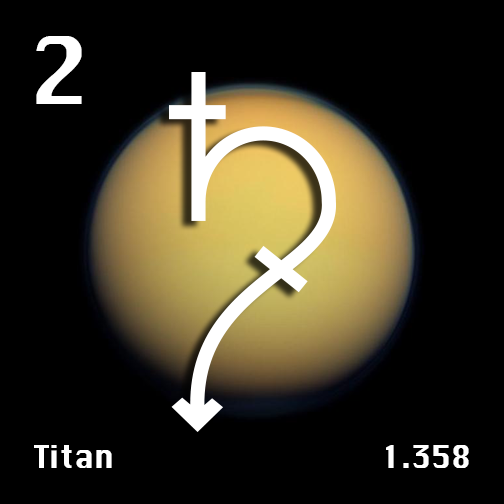

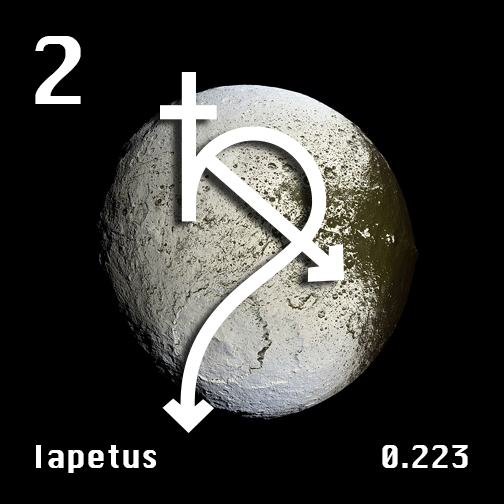
Tethys has the lowest density of all major moons in the Solar System at 0.98 g/cm3, indicating that it is made of water ice with just a small portion of rocky material. Spectroscopy of its surface confirms it’s low density by identifying water ice as the dominant surface material. The surface of Tethys is very bright, being the second-brightest of the moons of Saturn after Enceladus, and neutral in color.
Tethys is heavily cratered and cut by several large faults and graben. The largest impact crater, Odysseus, is about 250 miles in diameter, whereas the largest graben, Ithaca Chasma, is about 62 miles wide and more than 1243 miles long. A small part of the surface is covered by smooth plains that are thought to be cryovolcanic in origin.
Enceladus is the sixth-largest moon of Saturn but by far one of the most interesting. It is also covered in ice and ejects plumes of saltwater that are laced with grains of silica-rich sand, nitrogen, and organic molecules, including trace amounts of simple hydrocarbons such as methane, propane, acetylene, and formaldehyde.
This indicates that hydrothermal activity may be at work in Enceladus’s subsurface ocean. In addition, models indicate the large rocky core is porous, allowing water to flow through it to pick up heat. Molecular hydrogen, a geochemical source of energy that can be metabolized by methanogen microbes to provide energy for life, could be present if, as models suggest, Enceladus’s salty ocean has an alkaline pH from serpentinization of chondritic rock.
Iapetus is the third-largest natural satellite of Saturn, the eleventh-largest in the Solar System, and the largest body in the Solar System known not to be in hydrostatic equilibrium. Although it is Saturn’s third-largest moon, it orbits much farther from Saturn than the next closest major moon, Titan. Because of this distant, inclined orbit, Iapetus is the only large moon from which the rings of Saturn would be clearly visible; from the other inner moons, the rings would be edge-on and difficult to see.
Discoveries by the 2007 Cassini mission revealed several unusual features, such as a massive equatorial ridge running three-quarters of the way around the moon. This unique equatorial ridge is so high that it visibly distorts Iapetus’s shape even when viewed from a distance making it appear walnut shaped.
Dione is the 15th largest moon in the Solar System and is more massive than all known moons smaller than itself combined. Dione was discovered by Italian astronomer Giovanni Domenico Cassini in 1684.
Dione is currently in a 1:2 mean-motion orbital resonance with Saturn’s moon Enceladus, completing one orbit of Saturn for every two orbits completed by Enceladus. This resonance maintains Enceladus’s orbital eccentricity and provides a source of heat for Enceladus’s extensive geological activity which includes cryovolcanic geysers.
Dione also has two co-orbital or moons that share its orbit, Helene and Polydeuces. They are located within Dione’s Lagrangian points L4 and L5, 60 degrees ahead of and behind Dione respectively.
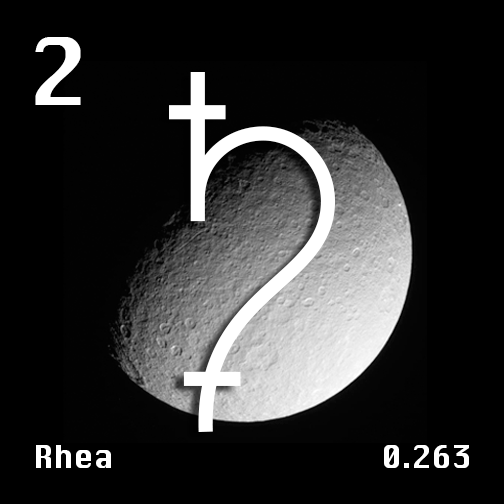
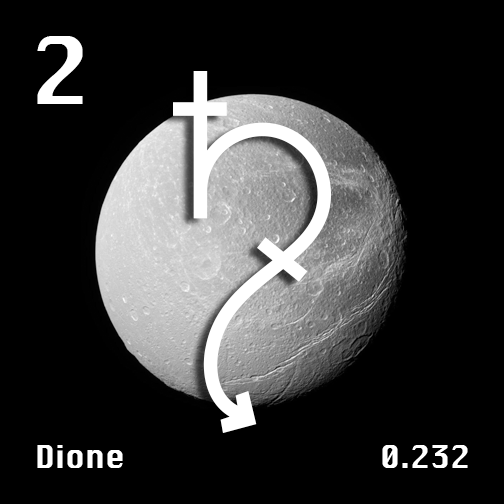
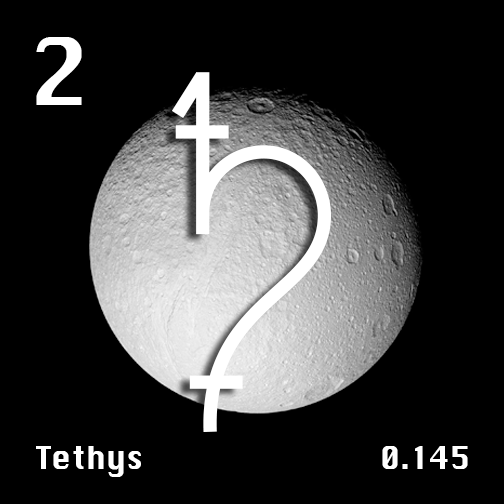
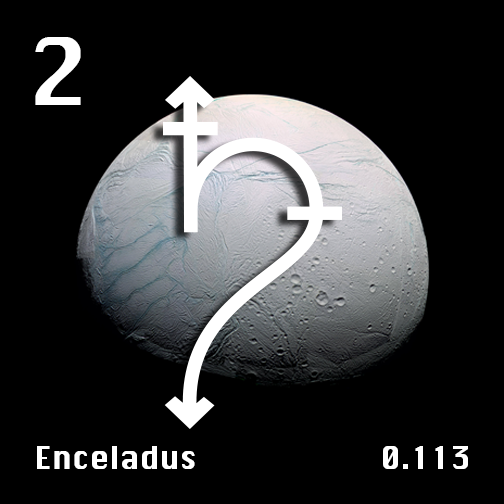
Rhea is the second-largest moon of Saturn and the ninth-largest moon in the Solar System. It is the second smallest body in the Solar System for which precise measurements have confirmed a shape consistent with hydrostatic equilibrium, after the dwarf planet Ceres. It was discovered in 1672 by Giovanni Domenico Cassini. Rhea is relatively small and similar in size to its sister moons Tethys and Dione.
Rhea, like our Moon, is tidally locked in phase with Saturn, completing a 4.5-Earth-day orbit around the planet at a distance of 327,500 miles. This means Rhea isn’t influenced by tidal forces like Tethys and Dione.
There are many groups of smaller moons outside of Saturn’s largest seven moons. These groups consist of the Tethys Trojans, Shepherd moons, the Norse group, the Inuit group, the Gallic group, Hyperion, the Alkyonides the G-Ring group and Dione’s trojan moon.
Shepherd moons are moons that orbit within, or just beyond, Saturn’s ring system. These moons acquire their name as “shepherds” because they help shape and sculpt Saturn’s rings, giving them sharp edges and creating gaps within the ring system. The moons of this group are Atlas, Pandora, Pan, Prometheus, and Daphnis.
The Alkyonides moons orbit Saturn in between Mimas and Enceladus. These moons are Pallene, Methone, and Anthe. The Alkyonides moons were named from the Alkyonides of Greek mythology. Anthe and Methone orbit along very faint ring arcs, whereas Pallene orbits within a complete, but faint ring. Methone is the only moon of this group to be photographed at close range by Cassini.
Saturn is the only planet in our Solar System to harbor Trojan moons. A trojan planet or moon is a small celestial body that shares an orbit with a larger body but remains either 60º behind or in front of the larger body. Tethys has two trojan moons, Telesto and Calypso, and Dione also has two, Helene and Polydeuces.
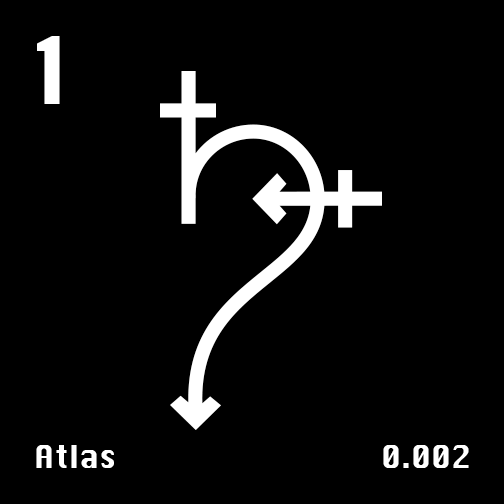
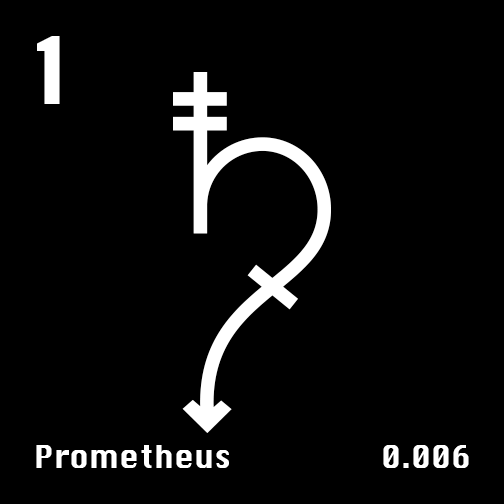
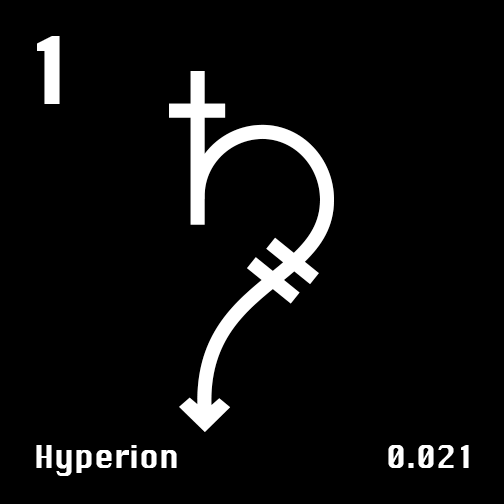
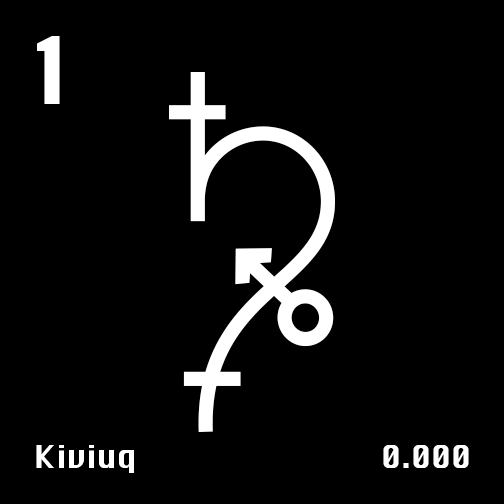
Janus and Epimetheus share a bizarre orbit which makes them co-orbital moons. They are of nearly the same size, with Janus being slightly larger than Epimetheus. Janus and Epimetheus have orbits with only a few kilometers difference in semi-major axis, close enough that they would collide if they attempted to pass each other. Instead of colliding, however, their gravitational interaction causes them to repel each other and make an ‘orbital u-turn” only to meet each other again going in the opposite direction. This meeting takes place every four years.
Hyperion is Titan’s nearest neighbor in the Saturnian system. The two moons are locked in a 4:3 resonance with each other. This means that for every four revolutions around Saturn Titan makes, Hyperion makes precisely three. With an average diameter of about 270 km, Hyperion is approx 270km in diameter and has an extremely irregular shape with a brownish-colored icy surface resembling a sponge.
The average density of about 0.55 g/cm3 indicates that the porosity of Hyperion exceeds 40%. This points to an icy composition. The surface of Hyperion is covered with numerous impact craters, some as large as 10 km. Another cool fact about Hyperion is that rotates chaotically. While on short timescales the satellite approximately rotates around its long axis at a rate of 72–75° per day, on longer timescales its axis of rotation wanders chaotically making the rotational behavior of Hyperion inherently unpredictable.

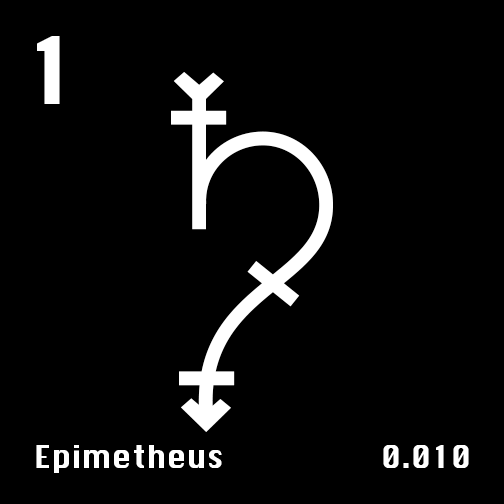

Saturn’s irregular moons are small satellites with large-radii, inclined, and often have retrograde orbits. These moons are believed to originated either by capture or collision. They are grouped according to their theoretical origin. The precise size of these moons is approximations since they are significantly smaller than most moons in our Solar System.
These irregulars moons generally have featureless surfaces and appear on spectrometer within the visible and near-infrared spectra dominated by water absorption bands. They are neutral or moderately red—similar to C-type, P-type, or D-type asteroids, though they are much less red than Kuiper belt objects. There are three groups of irregular moons, Inuit, Gallic, and Norse groups.
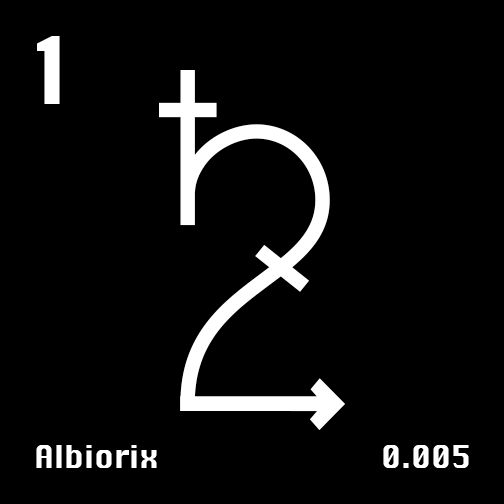
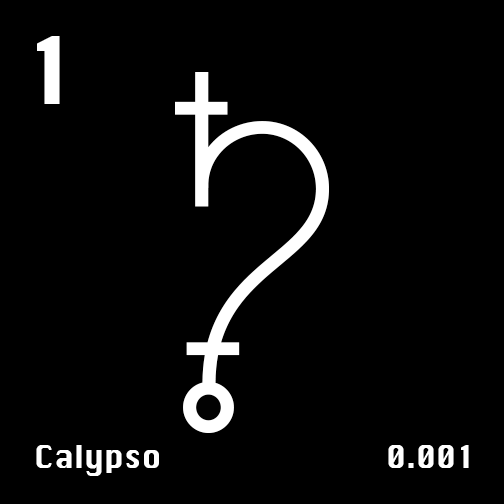


The Inuit group consists of the prograde moons Ijiraq, Kiviuq, Paaliaq, Siarnaq, and Tarqeq. The group appeared quite homogenous in early observations, displaying light-red color with similar infrared spectra. Recent observations have revealed that Ijiraq is distinctively redder than Paaliaq, Siarnaq and Kiviuq. Unlike the other three moons, Ijiraq’s spectrum does not display a weak absorption near 0.7 μm. This feature is attributed to water hydration.
The Norse group consists of 29 retrograde outer moons. They are Aegir, Bergelmir, Bestla, Farbauti, Fenrir, Fornjot, Greip, Hati, Hyrrokkin, Jarnsaxa, Kari, Loge, Mundilfari, Narvi, Phoebe, Skathi, Skoll, Surtur, Suttungr, Thrymr, Ymir, S/2004 S 7, S/2004 S 12, S/2004 S 13, S/2004 S 17, S/2006 S 1, S/2006 S 3, S/2007 S 2, and S/2007 S 3. Out of these moons, Phoebe and Ymir are the most prominent with Phoebe being discovered in 1899 via telescope by William Henry Pickering.
The Gallic group consists of Albiorix, Bebhionn, Erriapus, and Tarvos.
Observations have revealed that the largest member of the Gallic group, Albiorix, is shown to have two colors, one similar the color of Erriapus and Tarvos, and another less reddish color. It is believed that thought that Tarvos and Erriapus could be fragments of Albiorix, leaving a large, less red crater. Such an impact would require a body with a diameter of 1 km and relative velocity close to 5 km/s, resulting in a large crater with a radius of 12 km. Large craters observed on Phoebe, hint to possible collisions in the Saturnian system’s past.


